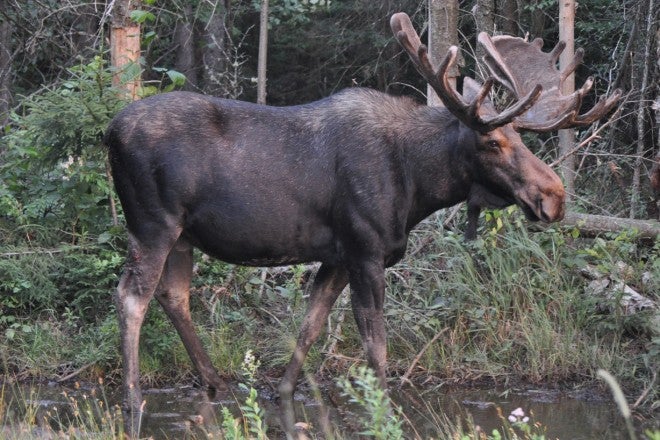New Hampshire: No Mo’ Moose?
Russ Chastain 04.06.15

With moose numbers falling in some areas of the state, New Hampshire game managers have begun taking action to protect this valuable resource.
Wildlife managers have complex jobs, and they exist to serve the people and protect their wildlife resources – for the enjoyment and use of the people, with public safety in mind. Hunting is a valuable management tool, and should only be suspended when and if game animal populations fall below certain thresholds. Those thresholds are being determined by New Hampshire Fish and Game (NHFG) right now, as their current ten-year management plan expires at the end of 2015 and they need to come up with a new plan.
Currently, only one wildlife management region meets moose population objectives set forth in the 2006-2015 plan. Parasites mentioned in the initial draft of the new Species Plan, winter ticks and brainworm parasites are blamed for population decreases.
Winter ticks abound, and lately have been observed to be on the rise. Odd as it may seem, large numbers of these parasites can and do kill even large animals, and have been known to “cause irruptive moose mortality events as seen [in New hampshire] in 2008, 2010 and 2013.” Reduced moose populations may not help hunters, but it may well reduce the tick loads, which would help the overall moose population
Brainworm is carried by whitetail deer and doesn’t seem to bother them at all, but even 1 or 2 brainworms can kill a moose. With deer populations at high levels in some regions of NH, brainworm infections in moose are on the rise. It’s hoped that reducing the deer population will help control this, but the reality is that the damage caused by brainworm may be unstoppable… only time will tell.
Proposed moose population objectives have been lowered in five of the six regions, with hard cutoff levels in all but one (an urban area where more moose means more problems). If moose levels hit or fall below these thresholds, moose hunting could be suspended indefinitely.
Although their initial draft calls for no management action in any of the six moose management regions, the plan is to keep a close eye on conditions and maintain the flexibility to take action more frequently than they have in the past. As the draft says, “Due to changing conditions, it is inappropriate to set 10-year objectives. Therefore the objectives listed here may be changed as new management and research information is obtained…”
Discussion of this topic on New Hampshire Public Radio’s site mainly concentrates on two things: 1) growing deer populations cause problems for moose, and 2) the public seems to be on board with whatever action NHFG deems necessary.
Here’s hoping that a feasible solution can be found to balance both deer and moose hunting.